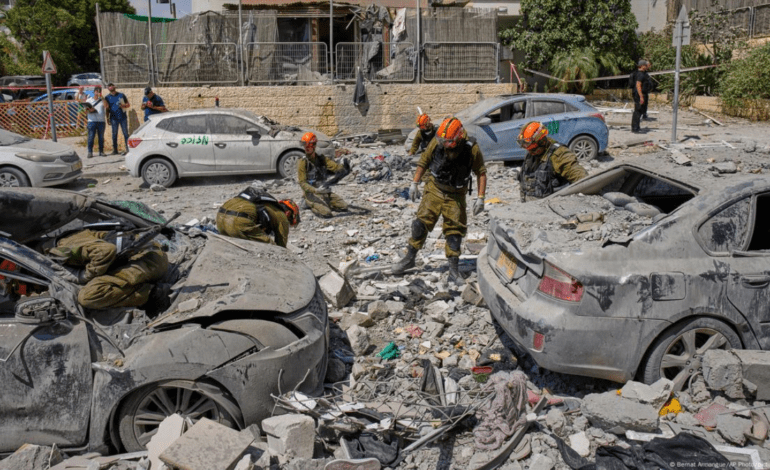
After the firestorm: Was it worth it? U.S. strike fallout and the fragile ceasefire in the Israel-Iran conflict
By Dr. Avi Verma
In continuation of our June 20th Publisher’s Note—“From Warning to Warfare”—we return this week with a sobering update: the worst may have been temporarily averted, but the embers still burn.
After U.S. President Donald Trump authorized a high-stakes strike on Iran’s nuclear facilities just over a week ago, the Middle East descended into a level of direct, sustained combat not seen in modern times. What followed was a devastating 72-hour exchange that left hundreds dead, cities smoldering, and global oil markets in chaos.
The U.S. assault targeted Iran’s three most critical nuclear development sites: Natanz, Khondab (formerly Arak), and the underground Fordow facility. Though Pentagon sources claim the strikes set back Iran’s nuclear capabilities by “at least three to five years,” independent analysts have cast doubt, noting that while infrastructure damage was significant, key personnel, centrifuge designs, and uranium stockpiles remain largely intact or dispersed.
Iran’s retaliation came swiftly. Over 180 ballistic and hypersonic missiles were fired, some directly striking military and civilian infrastructure in Israel and even a U.S. base in Qatar—marking a bold and dangerous escalation.
And then, silence.
On June 25, under mounting international pressure and diplomatic shuttle-work led quietly by France, Turkey, and Oman, a tenuous ceasefire was brokered. Both sides have ceased major offensives for now, though drone incursions, cyberattacks, and smaller proxy clashes continue. The truce—fragile, unformalized, and tentative—is holding, at least at the surface level.
But was it worth it?
Supporters of the Trump strike argue it showed the world that the U.S. would not tolerate the emergence of a nuclear-armed Iran. They claim the “shock” prevented Tehran from crossing the final threshold in its nuclear ambitions. Israeli Prime Minister Netanyahu praised the offensive as “historic, necessary, and overdue.”
But skeptics—and they are many—point to the aftermath:
- Over 600 Iranian civilian deaths, according to Human Rights Activists News Agency.
- 24 Israeli and 9 U.S. military casualties reported in retaliatory missile strikes.
- Soroka Hospital in Beersheba struck, leaving dozens injured.
- Thousands displaced in southern Israel and parts of western Iran.
- International travel and trade paralyzed, particularly across the Gulf states.
- Oil prices surged 22%, throwing global energy markets into turmoil.
President Trump, who initially declared the strike a “decisive message,” has since walked back his tone, calling for restraint and “a path to future talks.” Meanwhile, U.S. military assets in the Gulf remain on high alert, and senior defense officials are preparing contingencies in case Iran resumes hostilities.
India’s strategic tightrope
India finds itself walking an especially narrow diplomatic path. As a key defense partner to Israel and a long-time energy and trade ally of Iran, New Delhi has so far refused to pick sides. Official statements have called for “maximum restraint and immediate de-escalation.” But behind the scenes, Indian intelligence is actively tracking the movements of nationals in the Gulf, and contingency plans are in place for possible evacuations.
More critically, India is watching U.S. and Chinese maneuvers closely. Any formal entry by either into the conflict could dramatically disrupt the balance of power in Asia.
The bigger question: Was this the beginning of World War III, or the end of the beginning?
Though the missiles have stopped—for now—the political calculus is only getting more complex. The U.S. has shown it is willing to strike preemptively. Iran has shown it is not afraid to hit back. Russia, while silent militarily, has issued a strong rebuke to both Israel and Washington. China has called for a U.N. emergency session.
In this delicate intermission, the world has a moment to reflect—on brinkmanship, on diplomacy, and on the value of restraint. But the fuse, once lit, remains smoldering.
At IndoUS Tribune, we will continue to cover these developments with urgency, depth, and clarity—keeping in mind not only geopolitics, but the human consequences.
We urge all readers, especially those with loved ones in affected regions, to stay alert, stay informed, and stay hopeful.
Dr. Avi Verma
Publisher & CEO, IndoUS Tribune
Chicago, IL